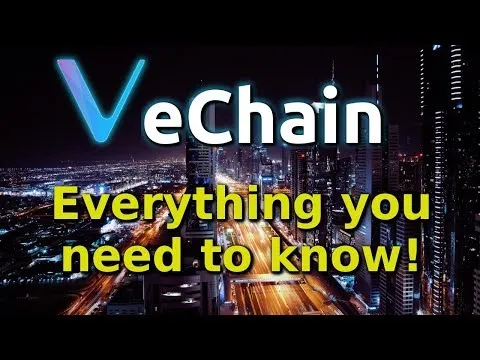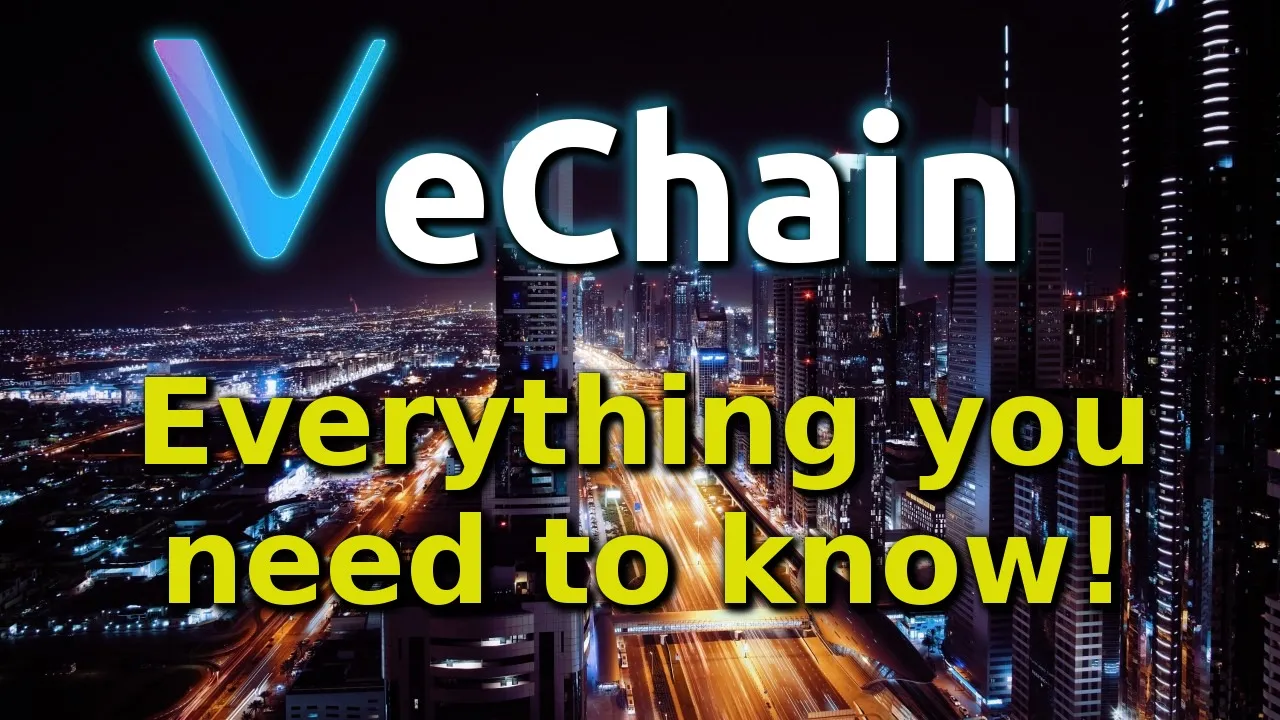
There is a video link below for those who prefer and audio version
Everyone in Blockchain has heard of the name VeChain. VeChain completed it’s ICO 9 months ago with a marketcap of $20million. Currently its marketcap is around $2.2 billion. So in 9 months, this project has more than 100x its value, and is still rising. And all of this was done in one of the worst marketcrashes crypto has ever seen.
The average crypto investor will know think of VeChain as a supply chain project, similar to WaltonChain, Wabi etc.. with mainnet coming up, people are realising that VeChain is actually also a Blockchain platform.
But few people really appreciate the extent of the technology behind VeChain and how game changing it is. And few people also appreciate the fact that as a platform, VeChain is specifically targeting corporate enterprises. So Ethereum in comparison, is the current biggest platform, but despite having hundreds of Dapps already, it does not have a single corporate enterprise building a Dapp on it, because it doesn’t offer the features that enterprises need, but VeChain does.
VeChain was the first Blockchain project to make a deal with the Chinese government, they are also the first Blockchain project to create the first accredited cryptocurrency disaster recovery plan with the help of their partner PriceWaterhouseCoopers (PWC)- whom if you don’t know is one of the big 4 accounting firms in the world.
So I hope this has wet your appetite enough to learn more about VeChain, and in the next 20mins, I will try to tell you “Everything you need to know” about VeChain.
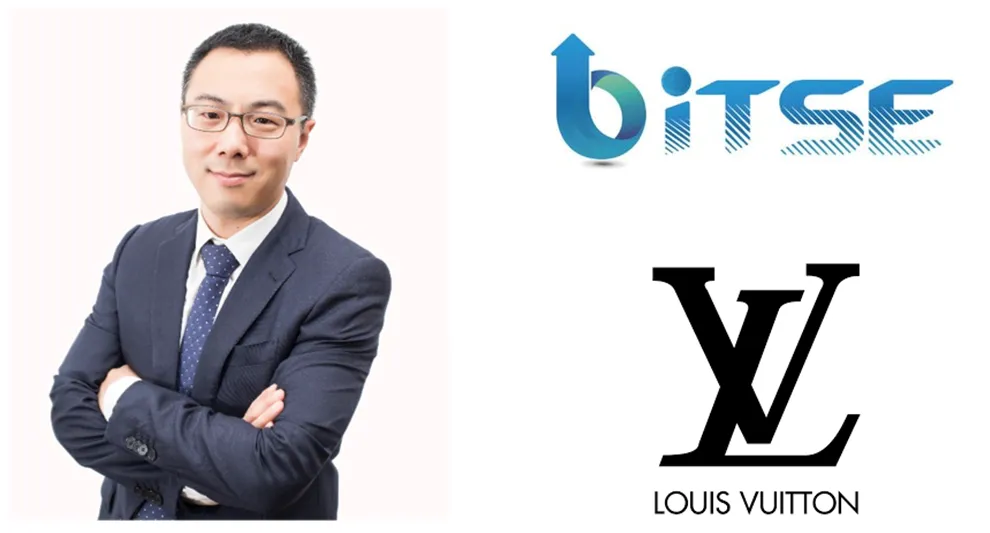
This is Sunny Lu, he is CEO and founder of VeChain, as well as Bitse. Bitse was one of the earliest Blockchain companies and has introduced other well known projects like QTUM into the crypto space. Prior to founding Bitse, he was also working as the CIO of Louis Vitton (LV) of China. And that particular role required him to have strong awareness of both the technological aspects as well as the business aspects of a project.
And the reason I’m introducing the CEO’s history to you is because his balanced view of technology and business has also affected how VeChain was created in a fundamental sense.
Where most Blockchain projects are focused solely on technological breakthroughs (e.g. scalability, interoperability etc…) to promote mass adoption, VeChain has identified the hurdles to mass adoption as more than just the technology but including governance, economic model, an ecosystem, the capacity to comply with regulation and changes.
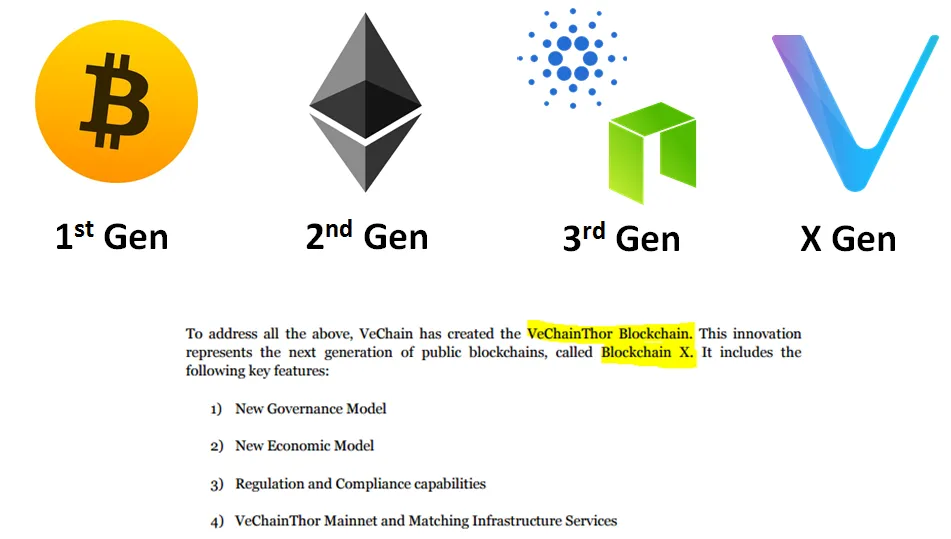
The resulting product of this holistic approach is the VeChainThor Blockchain. Where Bitcoin was 1st Gen Blockchain, Ethereum was 2nd Gen Blockchain, and most new platforms are 3rd Gen Blockchain projects, VeChain sees itself as not just a 3rd Gen project, but one that can evolve to 4th, 5th Gen and more if needed, in otherwords Blockchain X.
Governance
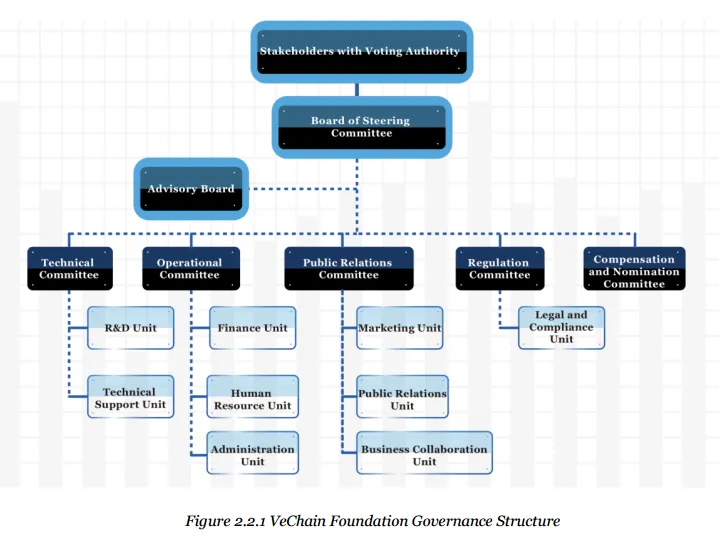
This is the governance structure of VeChain, the top of the foodchain are the Stakeholders with voting authority, that’s token holders like you and me. Not all token holders have voting authority, voting rights are dependent on 2 aspects, the number of tokens you hold and your role in the system.

To have a basic 1 vote, you need 1million VET tokens, and to play a specific role such as a Smart contract owners, you need to own a minimum of 5 million tokens for individuals and 15 million tokens for enterprises. To be an Authority Masternode you need to own a minimum of 25 million tokens. Playing a more important role will correspondingly allocate you with more voting authority, but holding more tokens doesn’t. Meaning if you are a masternode holder, you have more voting authority than a smart contract owner, but even if you have 50 million tokens, you do not get double the votes of other masternode owners.
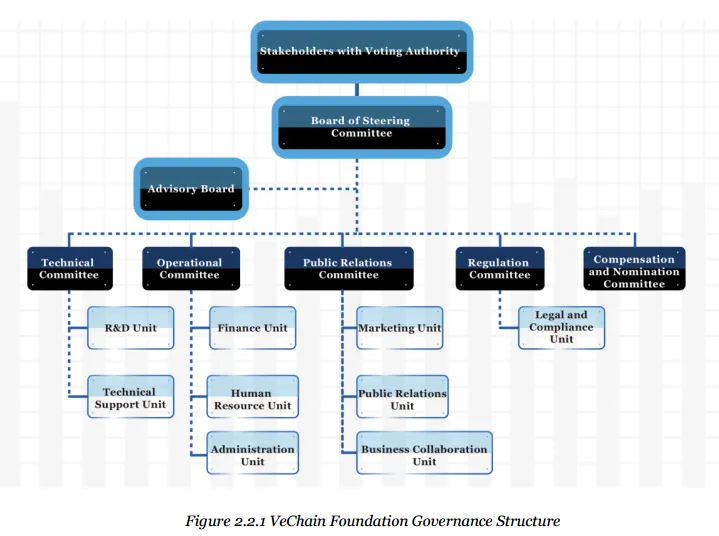
The other significant member in the governance is the Board of Steering Committee who are the actual governing body is. So they are the ones who do the actual work of laying out the critical strategies and overseeing the operational units of the project.
You will also notice they have an advisory board. It’s just a group of people who have diverse experience in various expertises to help and guide the project. Each member of the Advisory Board will be selected by the Steering Committee and they are expected to be independent and not associated with any stakeholder. The number of advisors cannot exceed the number of Steering committee members. Members of the advisory board will be compensated with a fixed amount if VET annually.
Tech
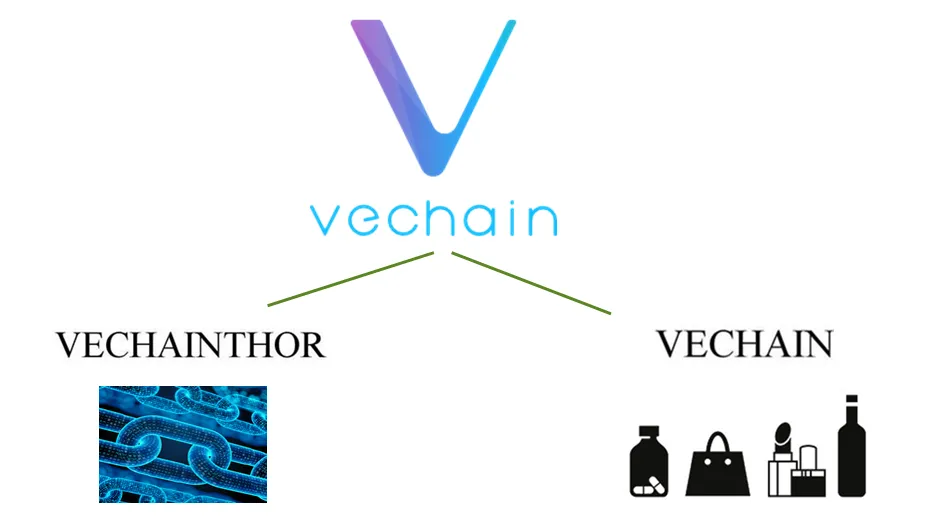
Vechain as you already know, comprises of VeChain Foundation also known as VechainThor which is the Blockchain Platform and secondly Vechain project which is the supply chain project.
Let’s take a look at the Blockchain first and what makes it special as a platform.
Payment Model
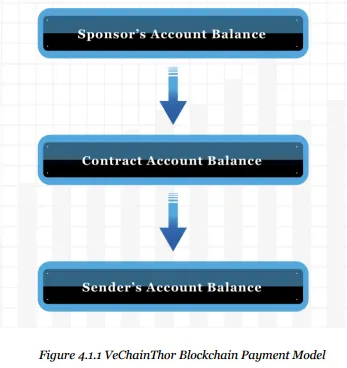
The first unique feature is their payment model. Usually payments in on platforms are simple, you have an account, you buy cryptocurrency from an exchange and you use that to pay for the fees that you incur.
However, what sounds like a simple model isn’t that simple for enterprises. Because if you’re an enterprise, you need stable fees, but cryptocurrencies price has too much volatility. Furthermore, enterprises are not necessarily familiar or comfortable with the various tools they need to use and manage their cryptocurrency.
Vechain solves this problem by utilising a multi-layer payment model. As you can see here, there is a Sponsor’s Account Balance which is where the smart contracts will deduct the fee from if assigned so by the contract account. It is optional you don’t have to use a sponsor account, it is really an enterprise feature that helps enterprises to manage the payment of multiple Dapps easily from one master account and also helps them to work better with business partners who do not want to deal with crypto assets. This multi-layer model cannot be employed on a more traditional Blockchain like Ethereum or Bitcoin as the payment in those systems is designed to end in a users own account only.
Transaction Model
VeChain’s transaction Model is also different or improved in the following ways:
1 Transaction ID. In the traditional model like Ethereum, if a user sends out multiple transactions at the same time the whole batch of transactions are treated as an account Nonce (or a single batch of transactions) and if one transaction failed, all the other transactions would also be rejected by Ethereum nodes. You can imagine how troublesome this would be for a financial instituition.
VeChain gives each transaction a unique ID, and each transaction is processed independently by VeChainThor.
2 Transaction Dependency
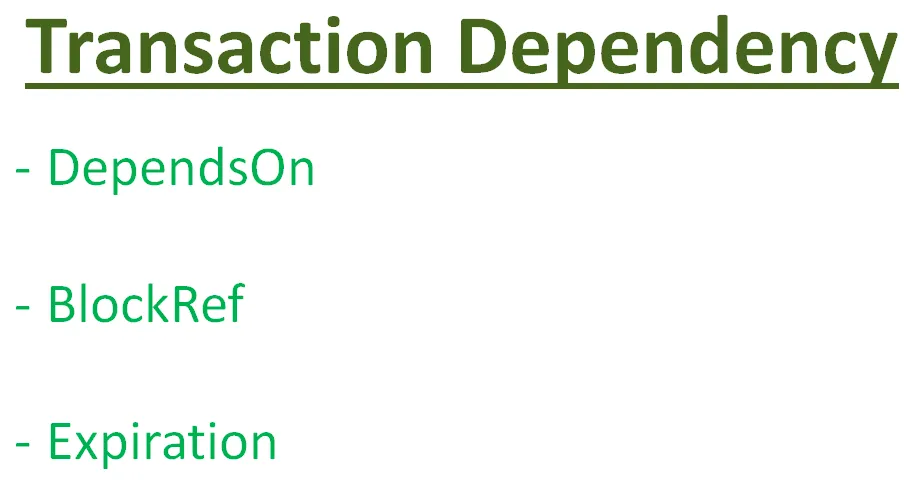
Every VeChain transaction has novel fields called DependsOn, BlockRef and Expiration. Let me explain simply what these terms mean.
Currently in Ethereum, only transactions sent by the same account can be configured in a specific order. If I was to send transactions from different accounts, I cannot ensure a specific order of transactions. Dependon is a feature that allows the sequence to be set across different accounts, and it can do so because each transaction is not linked to the account persay, that means not processed as a batch, but has it’s own unique Transaction ID.
BlockRef is basically more information of each block formation. Currently in Blockchain, we know the time of the transaction was completed, but we can’t tell when the transaction was created. BlockRef will allow us to see the full reference of every block, before and after. This is useful in financial cases, to delay the acceptance of a transaction. I.e. I can give you proof that I have done the transaction, but you will only get payment at the end of the month when it is due.
Field Expiration is simply expiring the transactions. We all know the feeling of having our transaction stuck for hours or even days and we can’t do anything about it. Expiration expires the transaction and returns our funds to us. It makes transactions safer since it prevents hijacking and re-using of funds.
3 Transaction Based Proof-of-Work
Currently when our transaction with Ethereum gets stuck for days, we have to set up a ridiculously high gas price to attract miners to pack the transaction into the next block.
With VeChainThor, each transaction is allowed to have Proof-of-Work, so if the above scenario was to happen, the sender has the choce to mine extra gas and do the computation themselves. So this does increase the gas value for the transaction, but it doesnt mean the sender has to pay more for a fault in the system, the sender actually earns by doing the Proof-of-work himself.
4 Multi-task Transaction
So currently in blockchain, one transaction is basically a transaction. It fulfils a simple purpose of doing that transaction e.g. paying someone. Multi-task Transaction means you can make a single transaction do multi-tasks by making it comprise of multiple small transactions. The advantage of having this feature is that it offers a great deal of power and flexibility to deal with complex situations in real applications.
I have to say at this point, just reviewing the tech of this project. I really like it. It’s not designed to just be another Blockchain technology, it’s designed to be used by enterprises and considers what they want.
Consensus Algorithm
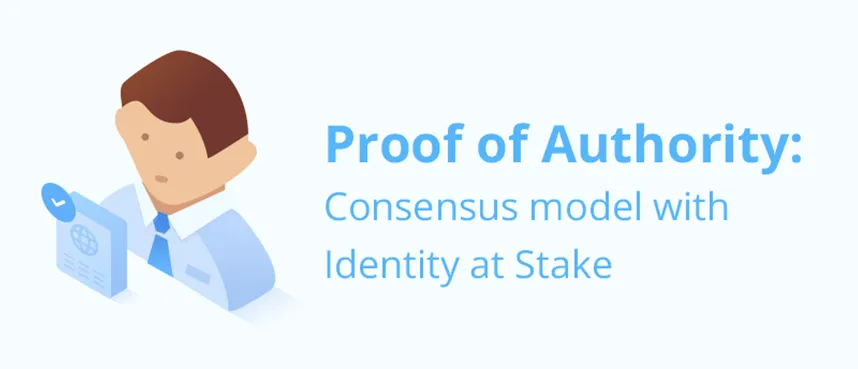
For their Consensus Algorithm, VeChainThor will be using Proof of Authority.
If you’ve been following our channel, by now you would have a good understanding of the more popular consensus algorithms like proof of work, proof of stake and DPOS.
Proof of Authority is slightly different. To run a node, each node user has to go through a KYC, and what they stake is not just their tokens but their reputation. The advantage of POA is that it doesn’t use a lot of computational power like POW and it doesn’t need communication between masternodes to reach consensus because of the reputation at stake.
Furthermore POA it is hard for the masternodes to collude against the systems, thus it makes it quite resistant to a 51% attack which other Blockchains are more susceptible to.
There were be 101 masternodes, so that quite decentralised compared to other projects e.g. EOS has 21 block producers and NEO has 7 bookkeeping nodes.
The initial transaction speed is expected to be 10,000 trx/sec, which will make it one of the fastest in the market and they are expected to include side chains later this year which will make it scale to even higher speeds.
API Gateway
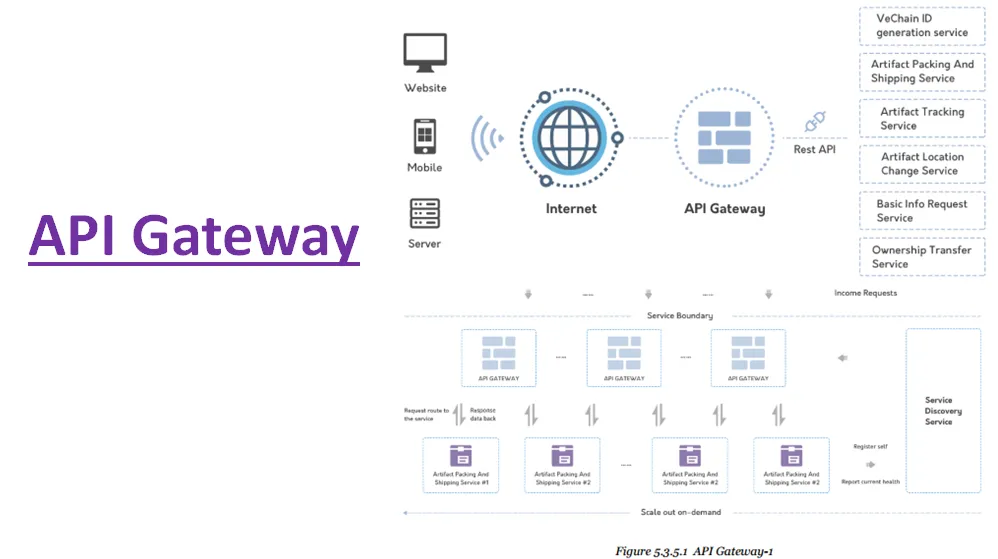
As a consumer, when we use Blockchain products we don’t deal with the actual technology, we use apps to access that technology. The app is the interface for our interaction with Blockchain and APIs are the features of the App. E.g. an Uber app will have features like GPS or payment features, and these are the APIs.
The actual process behind an APIs can be quite complex as you can see, but what I want to point out to you from this complicated diagram is what is known as horizontal expansion. The actual process involves policies like IP-hash, consistent hash etc.. and is too technical to cover for token investors, but the take home message is that the API model for Vechain unlike some API models out there is scalable.
And with this, we are moving into looking at the tech for the Vechain supply chain project.
VeChain and IOT

Blockchain is a new technology, but every supply chain solution will have to partner with another technology called the Internet of things (IOT)
IOT is basically devices communicating with each other. Just like you and I can talk to each other, IOT is devices talking to each other. This is essential for supply chain when you want to track a product from factory to store.
RFID chips are the chips that every mobile phone uses to do paywave or tap payment. It is also the main IOT chips that are used in supply chain currently.
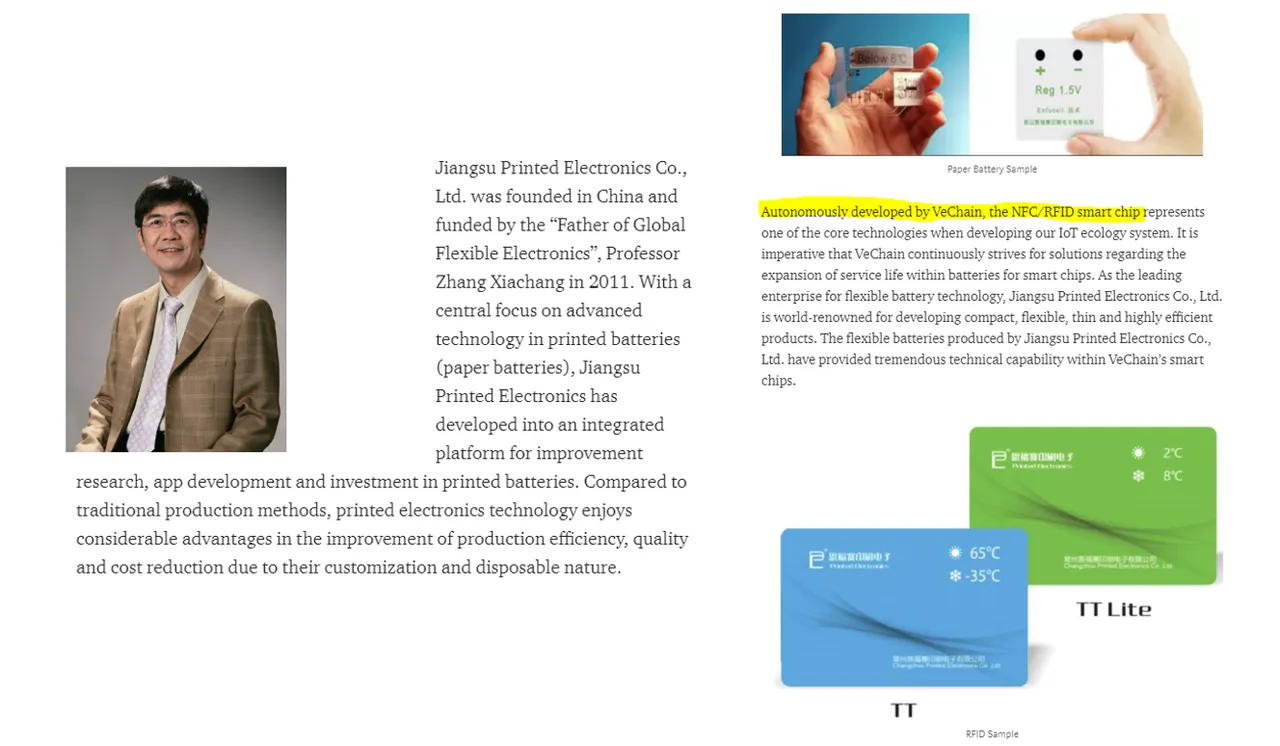
Vechain has partnered with Jiangsu Printed Electronics who was founded by China’s “Father of Global Flexible Electronics”—professor Zhang XiaChang to help with their development of the hardware.
Basically Jiangsu Printed Electronics has collaborated with a Japanese company to produce a super high-frequency RFID solution for temperature monitoring. So that will be used to monitor the transportation of products e.g. food that is temperature sensitive.
Also, whilst Jiangsu manufactures the RFID chip, VeChain has manufactured their own NFC/ RFID smart chip, meaning an RFID chip that integrates blockchain technology. They are still working on extending the service life battery for the chips which Jiangsu Printed Electronics are helping them with.
Besides RFID chips they will also focus on other devices such as sensors, GPS, and more.
IOT is so important to VeChain that they have an entire branch of their technological team dedicated to researching this area.
Hardware for supply chain tracking is a very hot area at the moment, many other projects e.g. Waltonchain, Ambrosus, Wabi, Te-Food etc.. all produce their own hardware. At the moment, I don’t think there is a clear leader yet, I think Waltonchain may have the best RFID chip at the moment and Ambrosus has the best sensor. But that’s just my personal impression and each company is still developing their products so we’ll have to wait and see who has the best final product. But this is definitely an area to keep your eye on if you’re invested in the supply chain projects.
Technical Roadmap
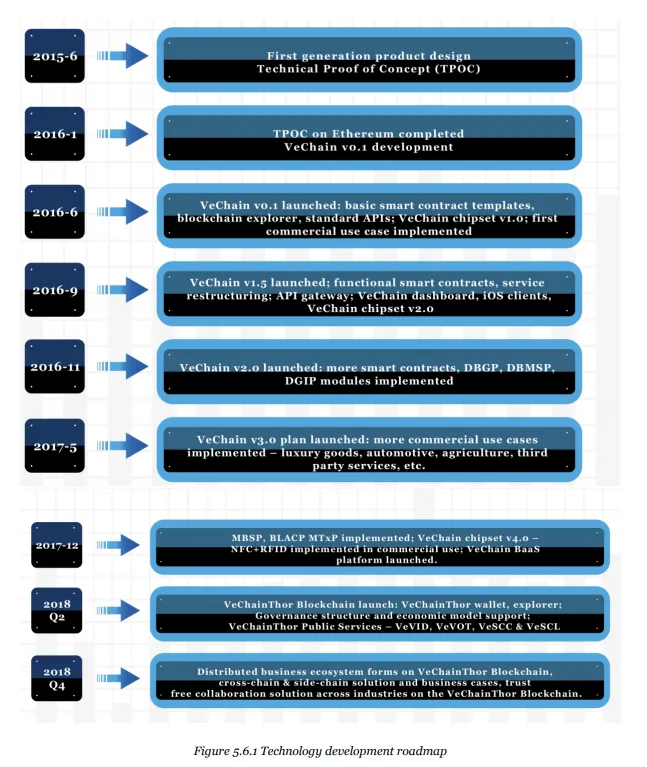
This is their technical roadmap, I’m not going to go through the whole thing with you. I just want to point out the main bits which is this roadmap began in 2015 and ends in Q4 2018. Which means the plan to launch the VeChain platform was something that was in the blueprint since the start. It’s not something adhoc that was thrown in the last few months. Cos some people have the impression that they started as a supply chain project and branched out to be a platform. Not so at all. It’s actually the other way round. Supply Chain is only one of the many potential use cases of VeChain technology, and just happens it took off before the platform was launched.
But if you read the end goal in Q4 this year is “the Distributed Ecosystem on VeChainThor Blockchain”. This got me very excited, let me explain to you why. The end goal of VeChain is to be an Ecosystem. Much like NEO and ICON are the two other very outstanding platforms that are currently building very strong ecosystems, VeChain is aiming to be the next big Ecosystem. You see there are many many blockchain platforms out there. How do you know which one to invest in? What makes a platform outstanding and valuable? I think that the platforms at the end of the day that will stand out are not the generic platforms that can build all sort of unrelated Dapps, it is the platforms that have a niche market e.g. VeChain appealing to Enterprises, and then all the Dapps that are built on it are relevant to each other, and they combine to be an ecosystem. That’s the future of blockchain platforms I believe. And that’s the future that VeChain is also aiming for. That’s why I’m so excited. So this means, even though VeChain currently already has a marketcap of over $2billion and is number 16 on the rankings, all that value is only from the supply chain business and the partnerships from the supply chain. The real potential of VeChain has not been unleashed yet, and that will be when the mainnet is launched and over time you have hundreds to thousands of Dapps being built on it and it will become the ecosystem for Enterprise Dapps. If you truly understand the potential of the VeChain project, it’s mindblowing. This project is going to be so huge.
Token use
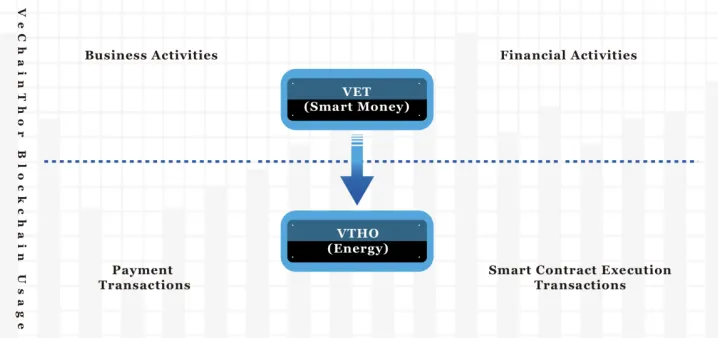
Alright let’s take a quick look at the token economy.
I apologise this is a quite a long review btw, most projects have a whitepaper around 30pages long, VeChain’s whitepaper is 114 pages long. So there’s so much to cover, but this is a project, is really worth doing one good review, because I feel is a project that every token investor should understand and be aware of, even if they choose not to invest in it. Because it’s going to be so prominent in the market, like Ethereum or Neo. You just have to know what these projects are about.
Ok so currently VeChain tokens are VEN tokens, it’s an ERC-20 token. That will be changed to VET tokens when mainnet launches.
I saw a youtube video where the guy got exited because 1 VEN token will become 100 VET tokens, but actually the over value is the same. Meaning 1 VET token is worth 1% of the current VEN token. The change is simply to make things easier for Enterprise users to calculate. Your actual value of what you hold will not change.
At the same time that VET tokens are launched, they will also launch a second currency called the VTHO or Thorpower. Think of it like NEO and GAS. VET tokens is like money that represents the monetary worth of the company and is used for financial activities. Thorpower is like electricity or energy and are used to power smart contracts and transactions. You will get free Thorpower for holding VET tokens. So it’s passive income and it’s calculated on a daily basis. This is very different from NEO which is only calculated on a monthly basis.
Unlike GAS though, the Thor tokens will have a stable value. So if you have been investing in GAS, you would know that GAS price has risen a lot. This also means that transactions cost more and anything else that relies on GAS e.g. launching a Dapp on the platform also costs more. To avoid this, VeChain have designed Thorpower to have a steady value. The way they do this is the Authority Masternodes have decision making power over how many VTHO there are and are produced. There is no supply limit of VTHO so if they need to deflate the price to keep it down, all they need to do is produce more VTHO to drop the token value.
Before you think this is a bad thing, it’s not. The VTHO you receive is based on the VET amount you have. So if the VTHO drops in value, all this means is you will receive more VTHO tokens. So for the token investor, it all works out well.
Team
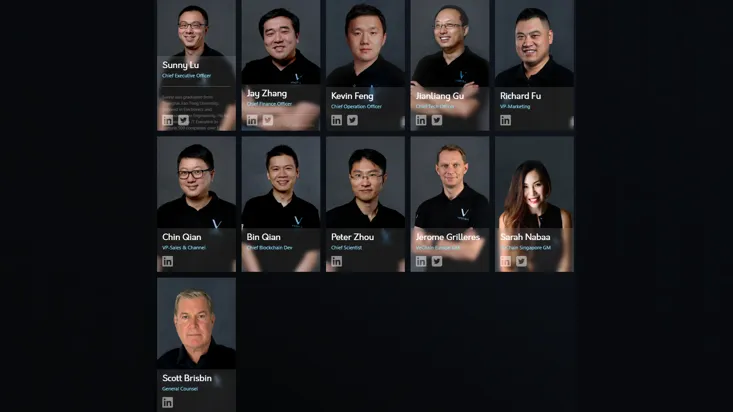
This is their team, we already covered the CEO Sunny Lu at the start, he is the man carrying the project.
Their CFO is Jay Zhang who previously worked at PWC and Deloitte as senior manager for over 14 years,
Their COO is Kevin Fang, who has over 12 years experience of consulting and assurance services in cybersecurity, privacy and emerging technology at PwC. He is also driving the development of blockchain services of PwC in the China/ Hong Kong region.
And you can go through the rest yourself, but this is a solid team behind the project.
One thing I like about this team is if you read their white paper and look at the way they do things, They have a lot of foresight, and they don’t rush to please the crowd. Their products at launch is always working well and solid. They have a whole section on testing in their whitepaper and also their mainnet is due to be released at the end of June. But actually the coding was completed back in Mid April, so over 2 months before mainnet launch, and they were doing internal testing, until a couple of weeks ago, when they asked professional companies with PWC to audit them, and now they are opening their code for open testing by anyone 3 weeks before mainnet launch. This is a very impressive timeframe in crypto space. Most of the time, projects are rushing to hit the datelines and more and often than not, after mainnet release or just before, it’s suddenly discovered there are major flaws in their technology. Like what happened with EOS just a few days ago. But I don’t think that will happen with VeChain, they are just very careful and intentional. I only really appreciated this when I took look at the project this time.
Partnerships
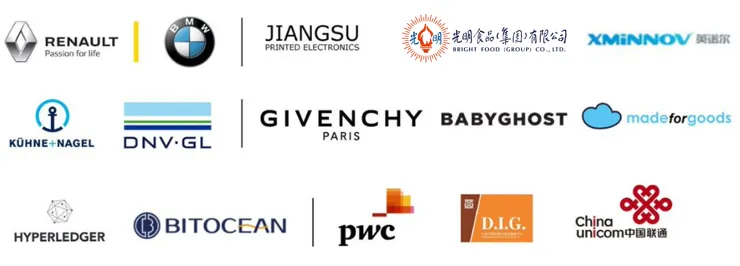
The make or break of any blockchain project is their partnerships. VeChain has a lot of partnerships, and impressive names as well. The above list is only a rough list of their partners, I may be missing some.
Some of the more notable partnerships are:
Chinese government in the Gui’an New Area—this is a economic development project
BMW—the automobile giant company
PriceWaterCooper House— one of the big 4 accounting firms in the world
DNV-GL—this one Il explain abit because not everyone may know them, but they are one of the most significant partners. DNV-GL is the world largest classification society, representing a global marketshare of 21%,
The China State Tobacco Monopoly Administration and the China National Tobacco Corporation. China accounts for 40% of all cigarette use in the world and these two bodies regulate it all. In other words, VeChain already partners to be used by 40% of all cigarettes smoked in the world. And if you’re a Tabacco company in another part of the world, why wouldn’t you use them in the future since they are already have the technology working and running?
Kuehne and Nagel—the biggest global sea freight forwarder in the world and second biggest air cargo. Over $20 billion annual revenue.
Fanghuwang Financial Services who provide collateral backed lonas to small and medium size enterprises.
Recently they also partnered with Bright Foods and Shanghai Xiandao Food, to integrate Vechain throughout their entire supply chain and data management system. This is combined revenue of $25.3 billion annually.
And there are more. These are just the more notable partnerships I am aware of.
Price
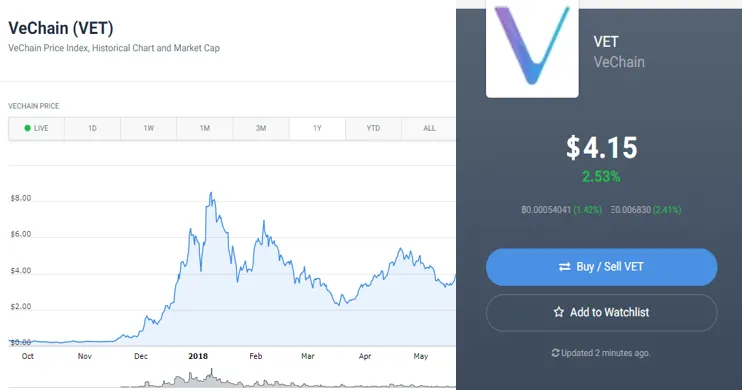
Vechain is currently $4.15. Btw, the token is still VEN token, not VET yet, so there’s an error on this website. Too enthusiastic.
At their peak in Jan they were over $8.50, so it’s not even their all time high. But if you consider the fact that the market is down so they are at a low price point currently, their mainnet is just around the corner, with mainnet, we also expect them to launch their native wallet soon, there will be the attraction of passive income with free Thorpower tokens, just in the near future alone, this project is likely to soar.
The long term potential is even more promising, with a platform that will hosts Dapps for enterprises and an aim of building an Ecosystem. At mainnet launch, they will already be one of the fastest platforms with best governance and Enterprise friendly features, but we are still expecting more news in terms of side chain scalability which will likely blow them through the roof.
It’s a great team behind the project who are very careful and intentional about the way they proceed, they have great partnerships and actual working use case already. What more do could an investor ask for?
My bullish prediction is that within the next year, VeChain will be a top 10 coin. I’m bullish on this coin, and before this review I don’t actually own any Vechain tokens, but now that I’ve taken a close look at it, I will be taking a position and soon, because I think once mainnet comes and the market picks up, we may never see this price point again.
This is definitely not professional advice, just me sharing my personal thoughts with you. Always do your own homework and make your own decisions!
That’s it guys, that’s everything you need to know on VeChain. Let me know what you think of VeChain in the comments below and thank you so much for joining us. If you found this post helpful, hit upvote and follow. There’s also a donation link in the description box if you would like to support me to do this full time. Have an awesome day wherever you are, and I will catch you again soon!
My dream is to be a full time crypto youtuber, researching and reviewing blockchain projects all day long! If you like this channel and would like to support this dream of mine, please consider dropping us a donation with my sincere and grateful thanks in advance!
Ethereum Donations: 0x10a181e6aa3fac77d2513b0948a535d979718f14
Bitcoin Donations: 1CdBp7WdzRcPp9FwzEupNp3XMPyWy2uN9B
Neo Donations: ARi7hRqE9H7nADGX2B2zPccWtojPuGEy4r
